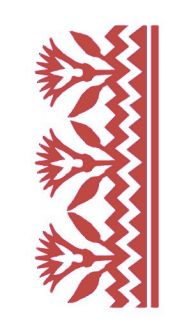
Anamorphoscopes such as this were popular nineteenth century toys. I first came across them on this TV programme (CR-8) and thought that this idea would make an interesting ICT club activity.
The software they are using is called Anamorph Me; it is simple to use and is free.
Mirror card is available in craft shops and works well for this activity but the best material I have found is sticky back mirror film. This is available on ebay in A4 sheets and also in rolls; more economical if you are working with a large group of children.
If you would like to try this either in an ICT club or at home then I have written the following anamorphoscope activity sheet which is aimed at children. To make the cylindrical mirrors I wrapped the sticky mirror film around empty kitchen and toilet rolls.
There is a commercially available craft kit aimed at children which explores the use of the anamorphoscope:
Morph-o-scopes by Ooz and Oz. The site includes a child friendly history of the technique.
And the following books are all worth a look:
“Victorian Kinetic Toys and How to Make Them” by Philip and Caroline Freeman Sayer includes a section on anamorphoscopes. The book is out of print; try amazon’s marketplace sellers for a copy.
“The Magic Mirror: An Antique Optical Toy” by the McLoughlin Bros has reproductions of Victorian images that can be used directly with your homemade anamorphoscope.
“The Magic Cylinder Book: Hidden Pictures to Colour and Discover” by Ivan Moscovich is aimed specifically at kids and includes a template to create your own images.
And the following books are all worth a look:
“Victorian Kinetic Toys and How to Make Them” by Philip and Caroline Freeman Sayer includes a section on anamorphoscopes. The book is out of print; try amazon’s marketplace sellers for a copy.
“The Magic Mirror: An Antique Optical Toy” by the McLoughlin Bros has reproductions of Victorian images that can be used directly with your homemade anamorphoscope.
“The Magic Cylinder Book: Hidden Pictures to Colour and Discover” by Ivan Moscovich is aimed specifically at kids and includes a template to create your own images.






